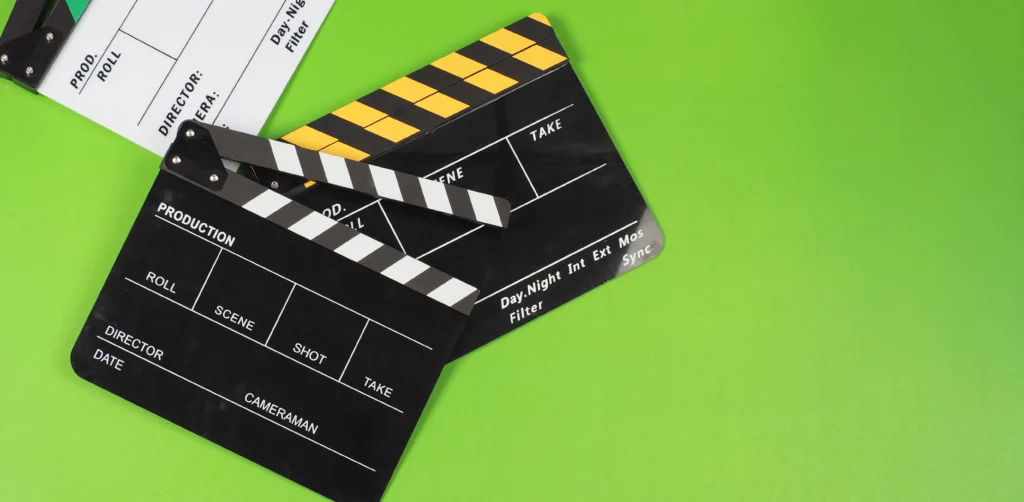
Typography plays a crucial role in setting the tone and atmosphere of a film. It not only enhances the visual appeal but also leaves a lasting impression on the audience. One key aspect where typography shines is in film credits—those moments when the names of the cast, crew, and production members are displayed. Elegant fonts in film credits add a layer of sophistication and contribute to the overall cinematic experience. This article explores the history, evolution, and impact of elegant fonts in film credits, diving into their significance and providing examples of films that have utilized these fonts effectively.
Typography in film credits is more than just a way to convey information. It serves as a narrative tool, reflecting the mood, genre, and thematic elements of the film. Elegant fonts, in particular, are often used to evoke a sense of class, refinement, and timelessness. Whether it’s a romantic drama or a historical epic, the right choice of font can leave a profound impact on the viewer.
Elegant fonts often feature:
These fonts are carefully chosen to match the artistic direction of the film and contribute to the audience’s emotional engagement. In some cases, elegant fonts serve as a visual metaphor, helping to tell the story even after the final scene has faded.
The history of fonts used in film credits is as rich as cinema itself. In the early days of silent films, credits were hand-lettered, and the fonts often reflected the Art Deco style popular in the 1920s and 1930s. With the advent of sound and color, the fonts in film credits evolved to match the visual complexity of the medium.
As filmmaking technology advanced, so did the design of credits. In the mid-20th century, typographic innovation flourished. Renowned graphic designers like Saul Bass revolutionized film title sequences by combining typography with animation, creating iconic credit designs for films such as North by Northwest (1959) and Vertigo (1958).
The digital revolution in the 1990s marked a significant shift in typography in film credits. With advanced software tools, filmmakers and designers had greater control over type design, resulting in more elegant and customized fonts. Today, typography in film credits is more experimental and diverse than ever, with sleek, elegant fonts taking center stage in many modern films.
Elegant fonts used in film credits can vary greatly depending on the genre and tone of the film. Some of the most common types include:
Serif fonts are characterized by small lines or strokes attached to the ends of letters. These fonts exude elegance and tradition, making them perfect for period dramas, biopics, and historical films. A popular serif font used in film credits is Garamond, known for its timeless and classic appearance.
Script fonts imitate the fluidity and elegance of handwritten calligraphy. They are often used in romantic films and dramatic pieces to evoke emotion and refinement. A well-known example of a script font in film credits is Snell Roundhand, which has been used in various romantic dramas for its graceful flow.
Although serif and script fonts are often associated with elegance, sans-serif fonts like Helvetica have been used effectively in more modern and minimalist films. Sans-serif fonts are clean and unobtrusive, providing a polished yet understated elegance. They are commonly used in contemporary films where simplicity is key.
Over the years, many films have used elegant fonts in their credits to make a lasting impression. Some iconic examples include:
These examples highlight how the right font choice can elevate the cinematic experience and resonate with the audience long after the credits roll.
The selection of an elegant font in film credits is often a deliberate choice to match the film’s tone and mood. Whether it’s a subtle serif font for a historical drama or a lavish script font for a romantic period piece, typography helps establish the film’s atmosphere. In some cases, the font used in the credits reflects the stylistic elements seen throughout the movie, creating a sense of cohesion.
In thrillers and suspense films, for example, fonts can be used to build tension and anticipation. A carefully selected, elegant typeface can emphasize the gravity of the unfolding drama, adding to the emotional weight of the scenes that follow.

In recent years, film credit typography has seen a surge of experimentation and creativity. Modern designers are pushing the boundaries of traditional typography, blending elegance with bold, unconventional styles. Minimalist typography has become a popular trend, with designers opting for clean, sans-serif fonts paired with simple animations.
Some of the current trends include:
Elegant fonts in film credits are more than just a design choice—they are a reflection of the film’s character and a key part of the visual storytelling process. From classic serif fonts to modern sans-serif styles, the typography used in credits helps set the tone, evoke emotions, and leave a lasting impression on the audience. As trends continue to evolve, elegant fonts will remain a vital component of cinematic artistry, continuing to shape the way we experience films.
In the end, the thoughtful use of elegant fonts in film credits not only honors the cast and crew but also enhances the overall aesthetic of the movie, ensuring that viewers are left with a sense of fulfillment long after the screen fades to black.